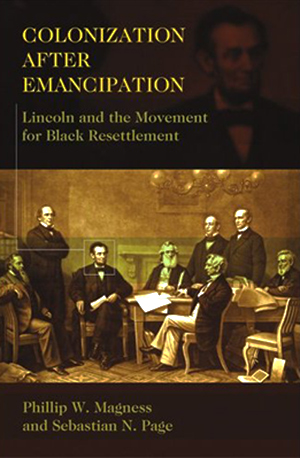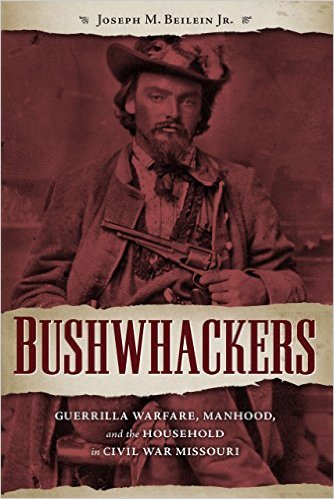Colonization After Emancipation: Lincoln and the Movement for Black Resettlement by Phillip W. Magness and Sebastian N. Page. University of Missouri Press, 2011. Cloth, ISBN: 0826219098. $34.95.
 Abraham Lincoln’s persistent interest in colonizing freed blacks out of the United States to solve the thorny problem of what to do with a distrusted black minority within American society has always raised questions. The concept had been tried, largely unsuccessfully, forty years before the outbreak of the Civil War. Yet, there was a durable interest among many Northerners in the possibility of moving free blacks, either voluntarily or by compulsory legislation, to areas of the world where they might have had a better chance of prospering than in the racially tinged atmosphere of both the northern and southern United States.
Abraham Lincoln’s persistent interest in colonizing freed blacks out of the United States to solve the thorny problem of what to do with a distrusted black minority within American society has always raised questions. The concept had been tried, largely unsuccessfully, forty years before the outbreak of the Civil War. Yet, there was a durable interest among many Northerners in the possibility of moving free blacks, either voluntarily or by compulsory legislation, to areas of the world where they might have had a better chance of prospering than in the racially tinged atmosphere of both the northern and southern United States.
Historians have long assumed that Lincoln’s serious interest in colonization, however, waned quickly after he adopted an emancipationist course for the Union war effort in September, 1862. Certainly, there were a couple of furtive efforts after that date, but they quickly fell out of view. Maj. Gen. Benjamin Butler’s enigmatic reference to a conference he had with Lincoln a few days before the president’s death, in which Butler implied that Lincoln was still interested in a colonization scheme, has usually been taken with a large grain of salt.
Phillip W. Magness and Sebastian N. Page now show us that Lincoln’s interest was hardly furtive after the preliminary Emancipation Proclamation of September 22, 1862. It was real, and the president pursued colonization schemes with quiet and unobtrusive fervor. His efforts focused on British Honduras, where a plantation economy in need of fresh labor and controlled by an essentially friendly government in London seemed right for the object of transferring thousands of freed slaves to a better life. Lincoln worked actively throughout 1863 on the project. He appointed a colonization agent named James Mitchell, got Congress to appropriate money, and then placed Mitchell and the fund under the control of his Secretary of the Interior, John P. Usher. The project never bore fruit, despite the energetic efforts of both Lincoln and Mitchell. In part, this occurred because Mitchell and Usher engaged in disagreements that soon became personal in nature, which stalled progress. Eventually, the project ground to a standstill.
Magness and Page show us that Lincoln chased the theme of colonization much longer than historians usually think, and they give a good deal of credence to Butler’s story of the president’s interest to the very end of Lincoln’s life. But, for Lincoln, it was all carried on behind the scenes. He had removed mention of colonization and compensated emancipation from the preliminary Emancipation Proclamation when it came time to issue the final form of the document on January 1, 1863.
The authors bring this story, and its important lesson, to light because they engaged in superb research to track down the documentary trail outlining the British Honduras project. The paperwork for this subject became scattered and dispersed, for many reasons, until a cursory search could no longer illuminate the story. Magness and Page deserve a good deal of credit for archival research in both the United States and in England to find what was necessary to understand the British Honduras project as a major effort by the Lincoln administration from early 1863 until at least July, 1864. There can no longer be any doubt that Lincoln’s commitment to the concept of colonization was deep and abiding throughout his political career.
Magness and Page handle the subject very well. They present the evidence clearly, delve into the details with commendable thoroughness, and evaluate the implications of their case study for the larger issues involved in assessing Lincoln’s handling of the most difficult problem facing Civil War America. The true crisis facing the American people in the 1860s was not crushing the southern rebellion, but deciding how to treat four million newly freed African Americans and an additional half a million blacks who already had been become free before the firing on Fort Sumter. Their fine study shines welcome light on a small but significant part of that gigantic national drama.
Earl J. Hess is the Stewart W. McClelland Chair in History at Lincoln Memorial Universitya and most recently the author of Lincoln Memorial University and the Shaping of Appalachia.
